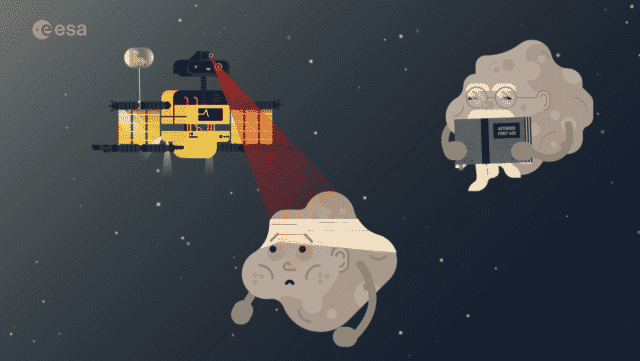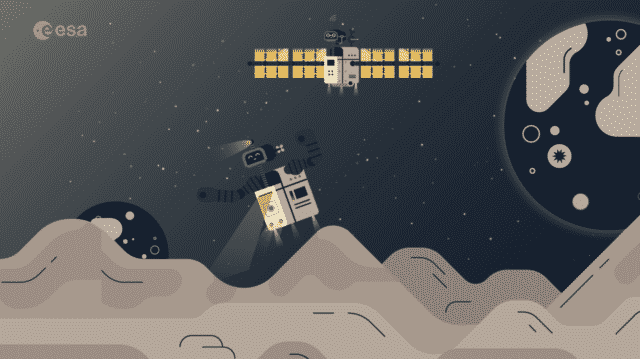Can we shove an asteroid? Do we have the technology to knock one off its path through space, deflecting it from a future impact? This is the question that Hera and two CubeSats, Milani and Juventas, are trying to answer.

As a part of the European Space Agency‘s asteroid impact research, the team of probes will visit a double asteroid system called Didymos. From ESA:
When Hera reaches it, the smaller of the two asteroids (Dimorphos) will already have been impacted by NASA’s Double Asteroid Redirection Test, or DART. This cosmic shove is expected to slightly shift Dimorphos’ orbit around the larger Didymos asteroid. Hera will examine the crater left by DART, the composition of Dimorphos, map its surface temperature and probe its internal structure similarly to an X-ray.

Though the need for planetary defense is very unlikley—”Earth collision by a sizable NEA is a very low probability event”—exploring our capabilities is always a good idea, and as the Planetary Society explains, “this technique works particularly well if used far in advance, since small nudges can add up to big changes later on.”
A note for sensitive viewers: The animation does briefly note the potential for city or small country destruction.
Meanwhile, Hera will deploy two briefcase-sized cubesats called Juventus and Milani. Packed with high-tech equipment such as a low-frequency radar, a mineral mapper dust analyzer, and a gravimeter, these mini-satellites will get an even closer look before attempting to land.

All together, the DART impact and Hera’s data will let us understand whether this technique can be used in the future to deflect an asteroid on a collision course with Earth, like an astronomical game of billiards.
In addition to Hera’s main planetary defense quest, the mission will gather invaluable bonus science. New understanding of collision physics and crater creation could revolutionize our understanding about how the solar system was formed. Hera will even test new techniques for autonomous deep space navigation and guidance.
Related links: JPL’s CNEOS Sentry: Earth Impact Monitoring Data, the Next Five Asteroid Approaches, and Planetary Defense Frequently Asked Questions.
Then watch these videos next on TKSST:
• Space Rocks: Comets, asteroids, meteors, and meteorites
• Did an asteroid kill the dinosaurs?
• Osiris-Rex: Chasing Asteroid Bennu – Out There
• Night Wanderers: Asteroid 2012 DA 14 passing Earth (February 2013)
Curated, kid-friendly, independently-published. Support this mission by becoming a sustaining member today.

